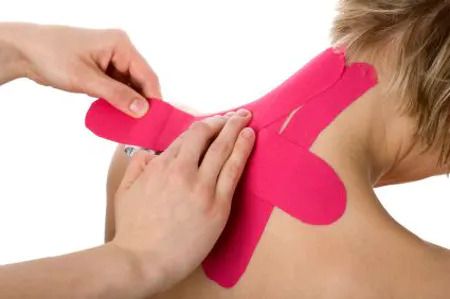Issue 43 Blue Crab Edition

Hey ya’ll! Sorry we’re rolling in a bit late this week, but the wait was worth it, I promise. I’ve noticed some of you have been fantastic about sharing PT Crab and I thank you vociferously! Most haven’t used our referral program, which I highly recommend. It gets a free month of King Crab (our premium version with double the articles) for both you and your friend. Sign up for that here.
With that, let’s dive in!
KT for Non-Specific LBP? Yea, It Seems to Work
The Gist - A group of writers from PTJ got together to dig through the trials on kinesiotaping for chronic nonspecific low back pain and they found something pretty good. They had a small, heterogenous set of trials to work from, but most trials showed a positive, interesting result. They took 11 RCTs with 785 patients and were able to demonstrate that KT lowers pain intensity and improves disability when compared to control, sham taping, and KT with no tension. Multiple methods were used in the studies, but the most common was two strips, placed bilaterally over the erector spine muscles. Compared with the placebos, pain was reduced an average of 0.73 on a 0-10 scale and disability by 0.51 on ODI. Pretty good results for a simple intervention.
Tell Me More - The gold here lies in the subgroup analysis, since the studies are so heterogenous and some are pretty small. For example, the bilateral strips over the erector spinae showed pain reduction of 0.5 over all controls, KT vs. sham tape was a 0.84 difference in pain reduction, and KT vs. no tape was 0.74 different. I could dig deeper into the subgroups, but that’s poor reading for those who don’t want it all, so dive into the paper for more. Because of the risk for bias when pooling everything together, the authors gave KT interventions low-quality evidence for improvement in pain and disability in chronic non-specific low back pain. Good results so far and there may be more data on this in the future. I’ll be sure to report it when there is.
Can I read the whole thing? Yes! If you have access to PTJ (which APTA members do). Here’s the PubMed link.
MWM vs. Just M for Chronic Ankle Instability
The Gist - In 2019, 30 participants walked slowly into a PT clinic, were split into two groups, and put through some mobes. 15 were traditional sorts and took an easy path through the study, laying on their backs and letting therapists moderately mobilize their taluses posteriorly. The other 15 went aggressive and laid on their stomachs while the PTs dorsiflexed their feet and applied a posterior force to their taluses at the same time. These “Active Joint Mobe” people seemed to take the right path, they improved quite a bit more than the passive, back layers. How much more?
With the primary outcome measures being dorsiflexion range and dynamic balance ability, both groups improved, but the active group improved by about 10% more than the passive. In dynamic balance, they improved significantly more as well, gaining 5-15% depending on the direction being tested. Noice!
Tell Me More - This was a one-time, short term study, so we don’t know how far any of these results carry over into the future. The mobes were performed 10 times on each participant’s unstable ankle in the course of one treatment session. The researchers tried this method out because of previous research that indicated that active joint mobilization (AKA mobilization with movement, MWM) was more effective across a range of MSK pathologies than passive mobes. The overall goal was to modify the movement patterns of people with chronic ankle instability, since CAI has been shown to modify the cortical control patterns of the lower limb, requiring more input from supplementary motor areas to control it. This research doesn’t indicate that they did that, but it does indicate that they might have. We’ll have to wait for more to make sure.
Can I see? No. Please? Okay, fine :P
That’s our week, hope you enjoyed! We’ll see ya’ll bright and early sometime next week. Cheers!






Comments
Want to leave a comment and discuss this with your fellow PTs? Join PT Crab and get summarized PT research in your inbox, every week.